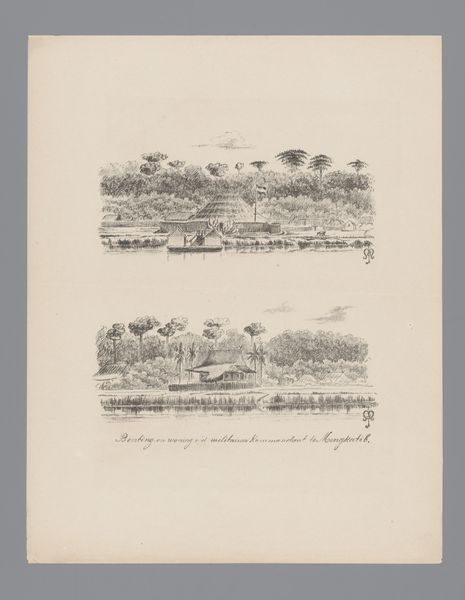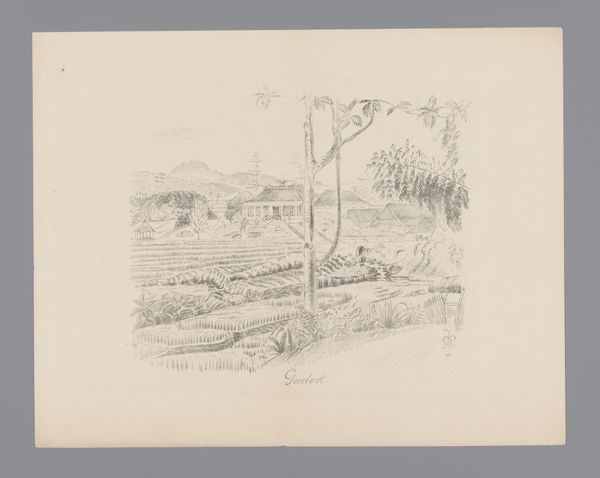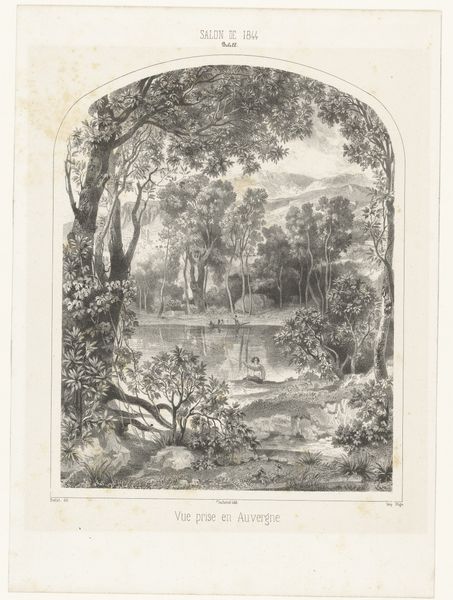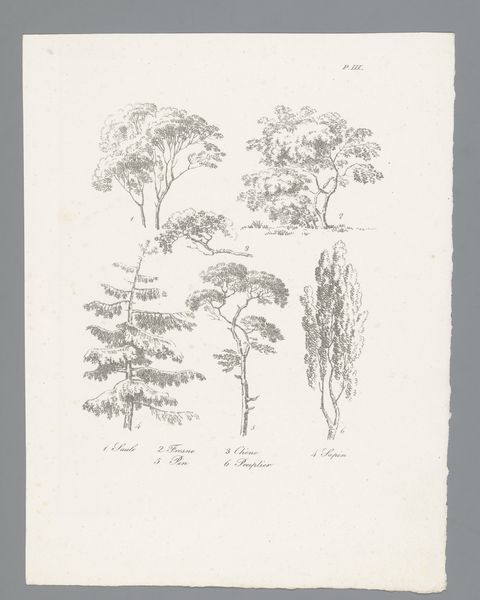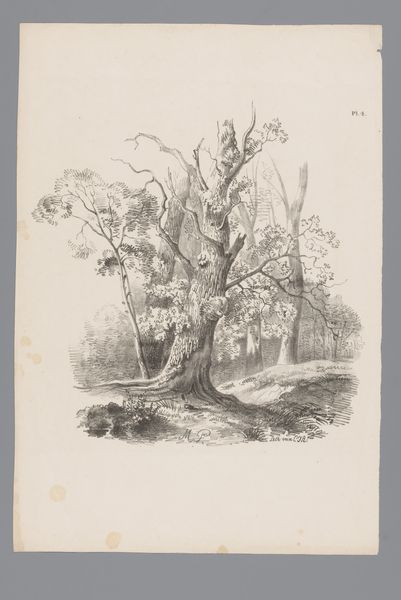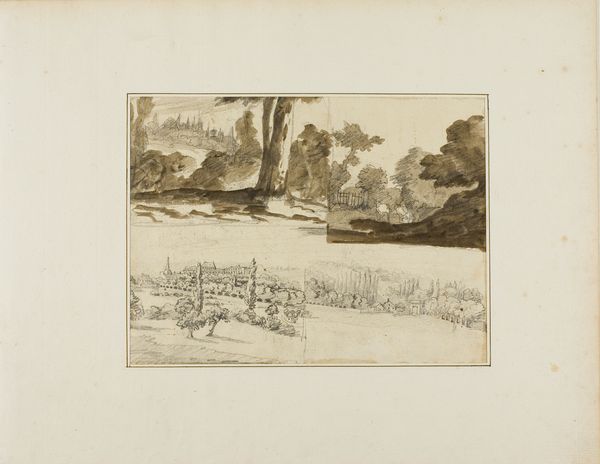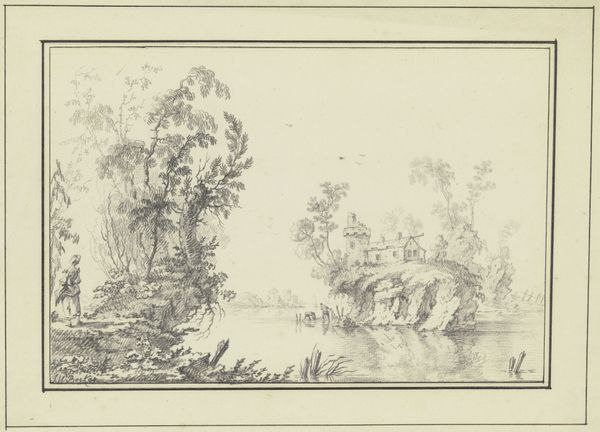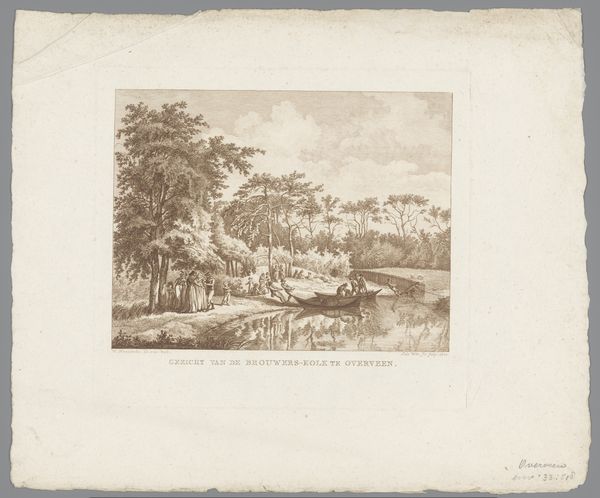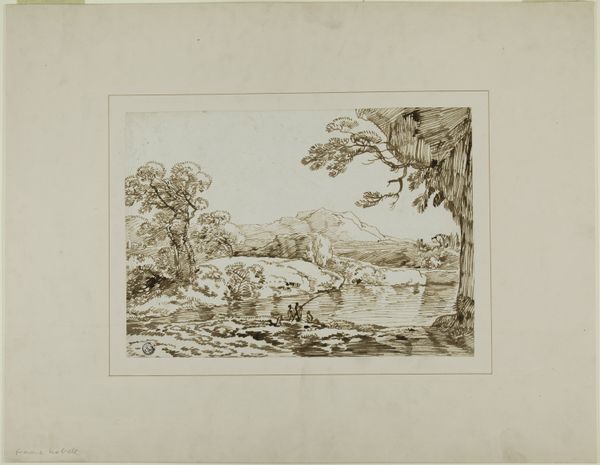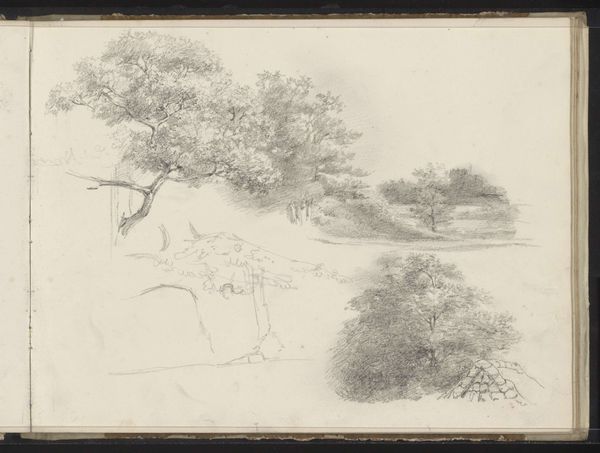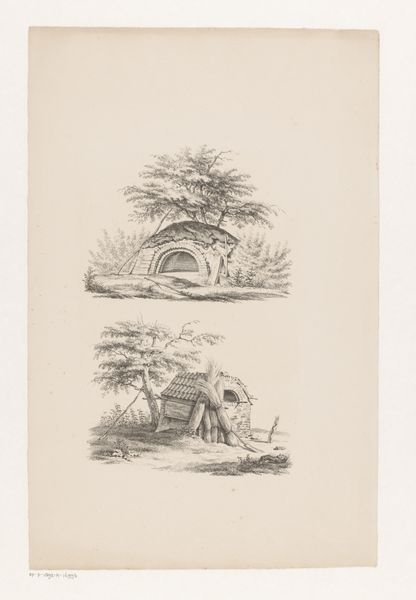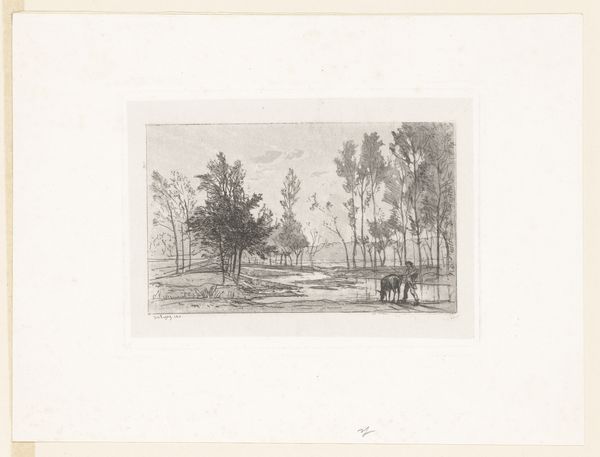
drawing, pencil
#
drawing
#
aged paper
#
light pencil work
#
pale palette
#
asian-art
#
sketch book
#
landscape
#
river
#
personal sketchbook
#
sketchwork
#
pencil
#
sketchbook drawing
#
watercolour illustration
#
storyboard and sketchbook work
#
sketchbook art
Dimensions: height 390 mm, width 305 mm
Copyright: Rijks Museum: Open Domain
Here we see "Twee graven op Atjeh en de Atjeh rivier," or "Two Graves in Aceh and the Aceh River," rendered in pen and ink by Willem Mathol de Jong. The work is divided into two registers, one depicting a graveyard and the other a river scene. What is immediately apparent is de Jong's use of line and texture to evoke a sense of place and mood. In the graveyard scene, closely packed, rhythmic vertical lines define the fence, while more scattered and chaotic lines suggest the organic forms of trees and foliage. This contrast between the geometric and the organic creates a visual tension. The lower register employs similar techniques, with horizontal lines mirroring the calm of the river and vertical strokes forming the palm trees. We might consider how de Jong's formalism reflects broader artistic and philosophical concerns. The structured, almost rigid, depiction of the graveyard contrasts with the fluid representation of the river, raising questions about the relationship between mortality and the natural world. De Jong uses a semiotic system of signs to communicate cultural codes and values. The graveyard becomes a symbol of human intervention and order, while the river represents nature's unpredictable flow. Ultimately, the formal qualities of line and composition function not just aesthetically, but also as part of a larger cultural and philosophical discourse.
Comments
No comments
Be the first to comment and join the conversation on the ultimate creative platform.
